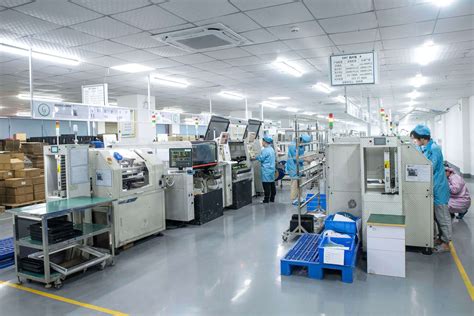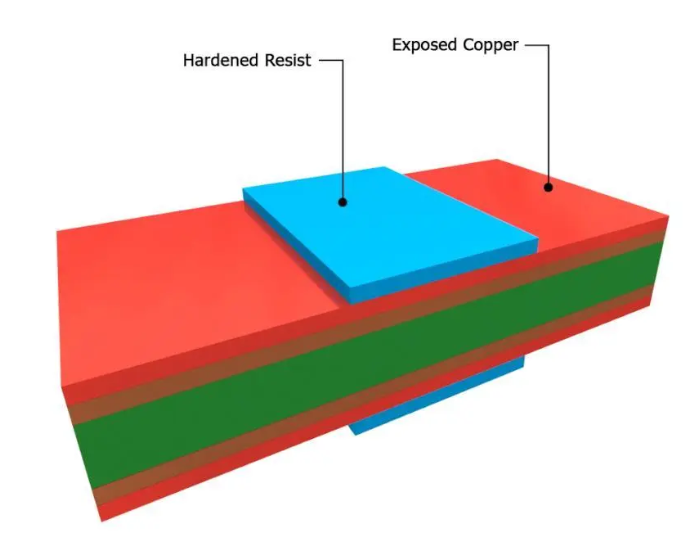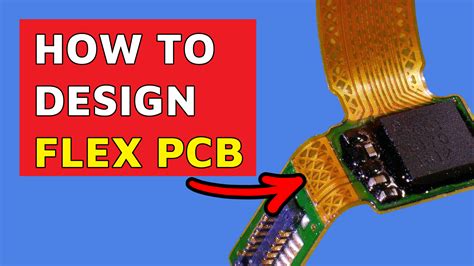Maximizing Efficiency with Altium Multi Board Assembly Techniques
Key Takeaways
The integration of Altium Multi Board Assembly techniques brings significant advantages to the field of electronics design, particularly in optimizing PCB assembly processes. By leveraging these innovative strategies, teams can effectively enhance overall productivity, ensuring a smoother workflow. One crucial aspect is the reduction of errors during assembly, which can be achieved through meticulous planning and execution. Best practices emphasize the importance of thorough documentation and standardized procedures when working with complex PCBA projects. Furthermore, enhancing collaboration among design teams is vital; utilizing Altium’s robust features can facilitate better communication and coordination across all stages of the development process. These collaborative efforts not only streamline operations but also contribute to faster turnaround times and successful project outcomes. Keeping abreast of future trends in multi board assembly will equip organizations with the necessary insights to stay competitive in an ever-evolving market, ultimately leading to more innovative and efficient designs.
Introduction to Altium Multi Board Assembly Techniques
In the modern landscape of electronics design, Altium’s multi board assembly techniques offer a robust framework for improving efficiency and precision during the PCB assembly process. Through the integration of innovative design methodologies, these techniques facilitate the simultaneous assembly of multiple PCBs, thus streamlining production workflows. The ability to manage complex pcba projects in a cohesive manner not only enhances productivity but also significantly reduces time-to-market for new products. Implementing these strategies encourages designers to optimize their workflows by utilizing advanced simulation tools and real-time collaboration features embedded in Altium software. As a result, teams can efficiently address potential challenges, such as component placement errors, before they manifest in the physical assembly phase. By embracing these comprehensive approaches, organizations stand to gain a competitive edge in an increasingly fast-paced industry landscape, ultimately ensuring successful project outcomes.
Understanding the Benefits of Multi Board Assembly in Electronics Design
The adoption of multi board assembly (MBA) techniques in electronics design offers a significant advantage to manufacturers seeking to optimize their pcb assembly processes. By integrating multiple circuit boards into a single assembly line, companies can reduce the overall assembly time and costs associated with individual board production. This approach not only streamlines the pcba process but also ensures that components can be placed more efficiently, minimizing wastage and enhancing overall productivity.
Utilizing MBA allows for simultaneous testing of multiple boards, which can significantly decrease the time required for quality assurance checks. Manufacturers benefit from having fewer handoffs between stations as the integration of several boards consolidates operations that would otherwise occur separately. These efficiencies lead to a quicker turnaround time for projects, which is crucial in a competitive market.
Moreover, the consistent application of best practices in multi board assemblies promotes greater accuracy and reduces potential errors during production. For example, by standardizing tooling and fixtures across projects, organizations can ensure every board meets their rigorous quality standards without excessive rework. The inherent flexibility within Altium’s multi board assembly frameworks further allows teams to adapt designs swiftly—accommodating changes or iterations without disrupting the entire workflow.
“To succeed in electronics design today, embracing innovative techniques is key to staying competitive. Multi board assembly is not just an option; it’s becoming a necessity.”
In summary, leveraging advanced multi board assembly techniques not only fosters increased efficiency but also contributes significantly to improved collaboration among design teams and strengthens project outcomes overall. By staying abreast of these methodologies, manufacturers can ensure that they are well-positioned for future trends within the realm of electronics design.
Key Strategies for Streamlining Multi Board Assembly Processes
To maximize efficiency in multi board assembly processes, it is essential to implement several key strategies that optimize the workflow of PCB assembly, or PCBA. First, starting with thorough planning is vital; gathering requirements from all stakeholders ensures that every aspect of the design is accounted for and can significantly reduce potential hiccups later in the assembly process. Utilizing comprehensive design tools available in Altium can facilitate this stage by enabling real-time collaboration among design teams.
Next, it’s important to standardize components wherever possible. By adopting uniform components across different boards, you can simplify assembly and minimize inventory costs. This standardization contributes to a smoother transition during the PCB assembly and helps ensure that errors are kept to a minimum, fostering a more streamlined workflow.
Moreover, investing in high-quality materials and components cannot be overlooked. Subpar materials can lead to increased failure rates during the assembly process, resulting in costly revisions and downtime. Therefore, ensuring high-quality inputs will enhance overall project outcomes significantly.
Lastly, continuous training for team members on best practices related to PCBA techniques helps maintain consistency and precision during production phases. Incorporating feedback loops within your team allows for iterative improvements and adjustments based on previous assembly experiences. In summary, focusing on planning, standardization, quality control, and training will collectively streamline multi board assembly processes while maximizing efficiency in electronic design projects.
Best Practices for Reducing Errors in Assembly
Implementing effective best practices in pcb assembly is crucial for minimizing errors and ensuring the overall quality of pcba processes. One of the most significant strategies is maintaining a well-documented workflow that outlines each step of the assembly process. This helps in identifying potential issues early on and allows for proactive measures. Utilizing high-quality components that adhere to stringent manufacturing standards can also prevent inconsistencies that often lead to faults in the final product. Additionally, integrating advanced verification methods such as automated optical inspection (AOI) can provide real-time feedback during assembly, allowing teams to catch errors before they escalate.
Moreover, continuous training for assembly personnel is vital; keeping staff updated on the latest technologies and assembly techniques enhances their proficiency and reduces human error. Implementing a robust review system, where designs are regularly checked against both Altium’s multi board assembly guidelines and industry standards, further minimizes mistakes. Lastly, fostering an open line of communication between design and engineering teams ensures that any potential issues are addressed collaboratively. By adhering to these practices, companies can significantly reduce errors in their pcb assembly processes, leading to more reliable results and successful project outcomes.
Enhancing Collaboration Among Design Teams with Altium
Effective collaboration among design teams is crucial for the success of pcb assembly projects, particularly in the context of Altium Multi Board Assembly techniques. By leveraging Altium’s robust tools and features, teams can streamline their workflows, share designs efficiently, and maintain consistent communication. Utilizing centralized design files within Altium, engineers can easily access the latest project updates, which minimizes the risk of discrepancies during the pcba process. Implementing version control and collaborative platforms allows team members to provide real-time feedback, further enhancing project efficiency. Moreover, employing simulation tools within Altium ensures that all aspects of the design are rigorously tested before moving to assembly, reducing rework and errors significantly. This collaborative approach not only fosters creativity but also accelerates time-to-market for new products, as all contributors are aligned towards common goals with transparency in their process. As such, organizations that prioritize collaboration through effective use of Altium can witness substantial improvements in productivity and project outcomes across their pcb assembly initiatives.
Case Studies: Successful Implementations of Multi Board Assembly
In examining the effectiveness of multi board assembly techniques, several case studies highlight the real-world applications of these methods, showcasing their impact on pcb assembly processes. For instance, a prominent electronics manufacturer adopted Altium’s multi board assembly strategy to enhance their production efficiency. By integrating pcba into their workflow, they were able to achieve a remarkable 30% reduction in assembly time. This was primarily due to the streamlined processes that minimized the iteration cycles typically required in traditional assembly methods.
Another notable example involves a startup that utilized these techniques to streamline its product development for multiple interconnected devices. By leveraging Altium’s advanced tools, they successfully reduced design errors and facilitated better communication within their design teams. The implementation led to fewer revisions and ultimately resulted in faster time-to-market for their innovative products. These case studies illustrate the transformative power of using multi board assembly practices not only in improving efficiency but also in fostering collaboration and reducing the potential for errors within the design and manufacturing stages of electronics development. Such success stories emphasize the importance of adopting best practices in pcb assembly, ensuring project outcomes that align with contemporary industry demands.
Future Trends in Altium Multi Board Assembly Techniques
As the landscape of electronics design continues to evolve, Altium’s multi board assembly (MBA) techniques are becoming increasingly vital for enhancing productivity and ensuring accuracy. One prominent trend is the integration of advanced automation tools that facilitate efficient pcb assembly, minimizing manual errors and expediting production timelines. The adoption of smart manufacturing principles, including the Internet of Things (IoT) and real-time data analysis, is also shaping the future of pcba (Printed Circuit Board Assembly) processes. These innovations allow design teams to monitor assembly operations closely, promptly addressing any discrepancies and further boosting productivity. Additionally, there is a growing emphasis on sustainable practices within multi board assembly techniques, where companies are focusing on materials and methods that reduce waste while still delivering high-quality products. As these trends continue to gain traction, collaborations between hardware and software realms will drive the development of more integrated systems that streamline workflows and enhance overall efficiency in Altium’s multi board assembly processes. The ability to adapt to these changing dynamics will not only improve project outcomes but also empower design teams to harness cutting-edge methodologies for future innovations.
Conclusion: Maximizing Project Outcomes through Innovative Strategies
In today’s rapidly evolving landscape of electronics design, embracing Altium’s multi board assembly techniques is crucial for enhancing productivity and achieving exceptional project outcomes. By integrating these innovative strategies, teams can effectively optimize pcb assembly processes, streamlining workflows and minimizing errors. The ability to manage multiple printed circuit board assemblies (pcba) not only facilitates improved resource allocation but also fosters collaboration among design teams. As organizations adopt best practices tailored to multi board assembly, they witness a significant reduction in time-to-market and an increase in the quality of final products. Furthermore, leveraging advanced features within Altium can enhance communication across departments, ensuring that all team members remain aligned and informed throughout the entire design and assembly process. In conclusion, prioritizing these strategies and embracing a culture of collaboration will undoubtedly lead to enhanced project efficiency and success in the competitive field of electronics design.
Conclusion: Maximizing Project Outcomes through Innovative Strategies
In the rapidly evolving landscape of electronics design, the adoption of Altium multi board assembly techniques plays a pivotal role in enhancing overall productivity. By integrating pcb assembly techniques that emphasize collaboration and efficiency, teams can significantly reduce the time and resources spent in bringing complex projects to fruition. Emphasizing best practices not only streamlines individual assembly processes, but also aids in mitigating potential errors. The synergy created through effective design team collaboration allows for a seamless workflow that is essential for successful pcba outcomes. As we look ahead, embracing innovative strategies within the framework of Altium’s multi board assembly will be critical in ensuring that projects meet industry demands with precision and agility. By leveraging these advancements, organizations can maximize their project outcomes while minimizing pitfalls typically associated with electronics design.
FAQs
What is Altium’s approach to multi board assembly?
Altium offers a comprehensive PCB assembly solution that integrates multiple boards into a single workflow, allowing for enhanced efficiency throughout the design process. This integration helps to optimize resource utilization and reduce lead times.
How can multi board assembly benefit my project?
Utilizing multi board assembly techniques can significantly streamline the PCBA process. By reducing the number of individual assemblies, projects can minimize potential errors and improve overall productivity.
What are some common challenges faced in multi board assembly?
Challenges such as managing interconnections between boards and coordinating different design teams can arise. Being proactive about these issues helps ensure a smoother pcb assembly process.
How does collaboration enhance multi board assembly outcomes?
Improved collaboration among design teams fosters better communication, which is vital for successful pcb assembly. It allows for shared insights and quick resolution of any potential concerns, contributing to higher project success rates.
Can you provide examples of successful implementations of Altium’s techniques?
Yes, numerous case studies showcase how companies have leveraged Altium’s innovative strategies for their PCBA, resulting in reduced costs and improved product quality.
For more about enhancing your projects through effective pcb assembly, please click here: https://www.andwinpcb.com/pcb-assembly/






